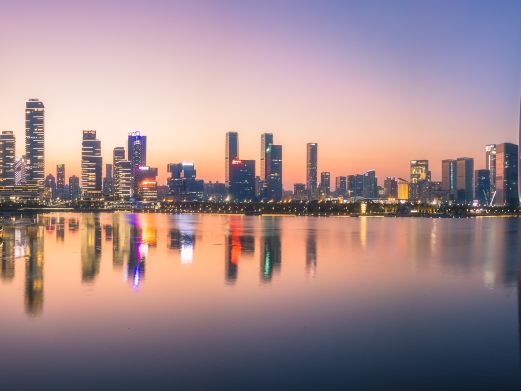One of the ‘Eight Sages of Chaozhou’ – After Wang Dabao passed away, he was buried in the ‘Shenjiangyue’ area in front of the mountain in Guihu. His tombstone is 2.3 meters high and covers an area of about four mu. It is engraved with ‘The tomb of Wang Dabao, Minister of Rites in the Song Dynasty’. There are four stone statues of civil and military officials in front of the tomb, and two stone lions, stone horses, stone sheep, stone pillars for looking into the distance, and stone shoots on each side, arranged symmetrically on both sides of the tomb. The stone carvings have thick lines, simple and unsophisticated craftsmanship, are majestic and thick, and have extraordinary momentum. They can be called large-scale stone carving groups in the Song Dynasty.
Wang Dabao Wang Dabao, courtesy name Yuangui, is from Tangtou, Guihu. He is one of the ‘Eight Sages of Chaozhou’. He was born in the first year of Shaosheng in the Song Dynasty (1904). In the second year of Jianyan in the Southern Song Dynasty (1128), he ranked second in the imperial examination. At first, he was appointed as a professor in Nanxiong Prefecture. In the early years of Shaoxing, he served as a military adviser. In the eighth year of Shaoxing (1138), he was appointed to supervise the Dengwen Drum Institute and was in charge of Chongdao Temple in Taizhou (Linhai County, Zhejiang Province). Later, he resigned and lived at home. Coincidentally, Prime Minister Zhao Ding was exiled to Chaozhou. Wang Dabao studied ‘The Analects of Confucius’ with him every day. His knowledge was deeply appreciated by Zhao Ding. Soon, Wang Dabao was appointed as the prefect of Lianzhou. In Lianzhou, he got to know another prime minister, Zhang Jun. Zhang Jun advocated resistance against the Jin Dynasty and was framed by Qin Hui and exiled to Lianzhou. Wang Dabao had a close relationship with him. Zhang Jun admired Wang Dabao’s character and knowledge and ordered his son to study under Wang Dabao. After his tenure in Lianzhou ended, Wang Dabao was transferred to be the prefect of Yuanzhou. In addition to being the director of the National Academy and concurrently serving as a lecturer in the Chongzheng Palace, he directly served in the Fuwen Pavilion and was the prefect of Wenzhou. Later, he successively supervised the criminal justice in Fujian and Guangdong. After Emperor Xiaozong ascended the throne, Wang Dabao was appointed as the vice minister of the Ministry of Rites. Later, he held various official positions up to the minister of the Ministry of Rites. Wang Dabao dared to oppose Qin Hui in the court and had the nickname ‘Wang Laohu’. He died in the sixth year of Qiandao (1170) at the age of seventy-seven. His works include 10 volumes of ‘Interpretation of the Book of Changes as a Witness’, 2 volumes of ‘Lectures at the Imperial Study’, 6 volumes of ‘Memorials and Proposals’, 15 volumes of ‘Remaining Writings’, and ‘Interpretation of Poems in the Book of Changes and Wei’.Wang Dabao’s Tomb
One of the ‘Eight Sages of Chaozhou’ – After Wang Dabao passed away, he was buried[...]









